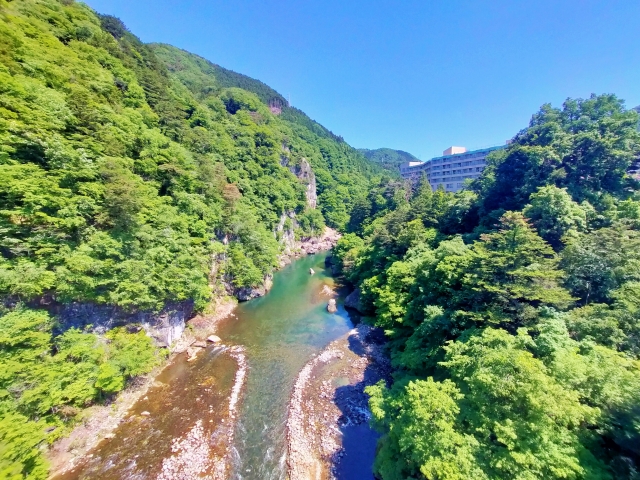About Kinugawa Hot Spring
Kinugawa Hot Springs originated in the Edo period, first as a waterfall hot spring found on the west side of the Kinugawa River, and later as Fujiwara Hot Spring, a hot spring that continued to gush out on the east side of the Kinugawa River. Soon, these two hot springs were combined and called Kinugawa Onsen, making it one of the few hot spring resorts in the Kanto region of Japan.
Currently, more than 80 hotels and ryokans have been established along the Kinugawa River, most of which have open-air hot springs facing the valley, where visitors can enjoy the comfort of soaking in the verdant and quiet valley. Kinugawa hot springs are popular among beauty lovers for their specific skin beauty effects, and are also effective for neuralgia, muscle pain, joint pain, shoulder pain, sports paralysis, stiff joints, bruises, sprains, chronic digestive disorders, hemorrhoids, and body cold, etc. In particular, they are known for their effectiveness in treating burns, and have been known as “Kinugawa for burns” since ancient times. “It has been known for its effectiveness in treating burns.
The Kinugawa hot spring area is surrounded by a variety of attractions throughout the year, including water sports excitement in spring and summer, leaf viewing in autumn and skiing in winter, so visitors can enjoy the hot springs while having fun at the hot spring resort.

How to get there
5 minutes by bus from Kinugawa Onsen Station
Tips
Large hotels and inns stand side by side along the Kinugawa River valley, where visitors can enjoy hot spring baths while admiring the spectacular view. In addition to the Kinugawa Line Rafting, leisure facilities such as Tobu World Square and Nikko Edomura are located nearby, and are popular with families and couples.
Website